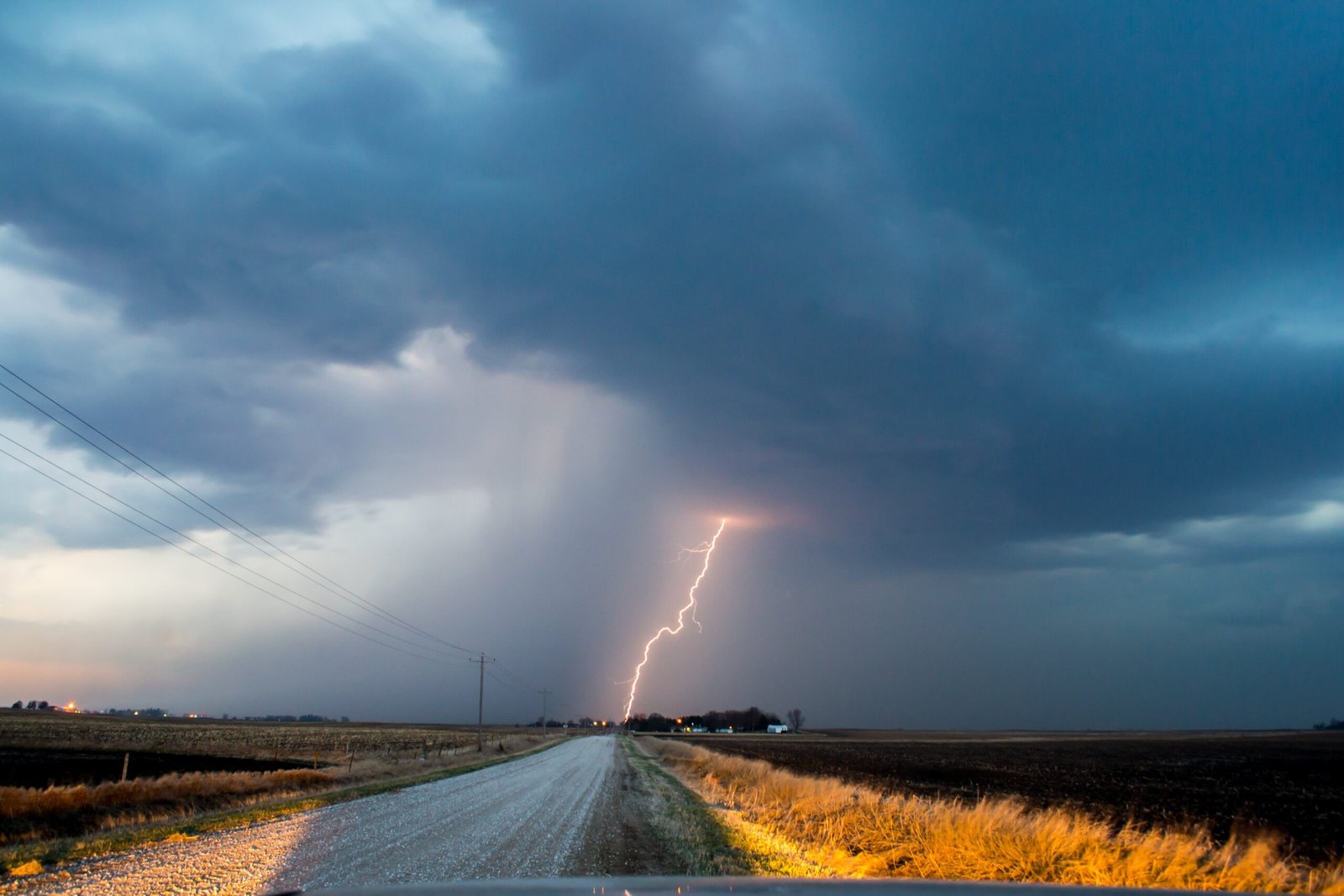In the face of a deeply dysfunctional Congress and a Supreme Court that has rolled back environmental protections, President Biden is taking action to address the climate disaster. The recently released Fifth National Climate Assessment confirms that the climate disaster is already here, but that there is still hope to do something about it. The Biden administration is announcing $6 billion in new spending to tackle specific problems identified in the assessment. One area of focus is strengthening and modernizing the aging energy grid, with $3.9 billion being allocated for this purpose. Additionally, investments are being made to support disadvantaged communities, address flooding risks, protect critical ecosystems, and prepare for the impact of climate change on infrastructure and national security. These investments not only aim to build resilience but also provide opportunities for economic growth and address historic injustices. With the scale of the climate disaster matched by its opportunity, the Biden administration is demonstrating that investing in climate action is smart business.
America’s Aging Energy Grid
The problem
Our ability to distribute electrical power is being put at risk by more extreme weather events. This not only leads to power failures during high winds and heat waves but those failures can start wildfires, creating their own disasters. Existing infrastructure is also not up to the task of handling new power demands created by the shift towards electrical vehicles, or working with renewable energy sources. Aging energy grids are expected to be strained by disruptions and transmission efficiency losses from climate change.
The solution
The Department of Energy is applying $3.9 billion in new spending to help strengthen and modernize the grid. This comes on top of an existing $3.46 billion investment, both drawn from Bipartisan Infrastructure Law funding. This money will be distributed in grant form through the Grid Resilience and Innovation Partnerships program and is available to entities ranging from higher education to electrical grid operators. The goal is to both shore up existing grid infrastructure to make it more reliable through extreme weather and less likely to cause wildfires, while developing and implementing new technologies that will expand the grid’s capacity to handle EV charging and distribute power from renewable sources.
Grid managers are gaining experience planning and operating electricity systems with growing shares of renewable generation and working toward understanding the best approaches for dealing with the natural variability of wind and solar sources alongside increases in electrification. Grid expansion and energy efficiency efforts are already creating new jobs in places like Nevada, Vermont, and Alaska.
The Climate Disaster’s Worst Impacts Are Being Felt by Disadvantaged Communities and People of Color
The problem
Decades of under-investment in poorer communities have left them facing disproportionate impacts from emissions caused predominantly by wealthier Americans. This has left communities ill-prepared for extreme weather, and people experiencing a multitude of negative health outcomes.
The solution
The transformational size of the investment required to mitigate the climate disaster also provides an opportunity to address historic injustices and enable more people to more fully participate in the American economy, growing markets, and benefiting everyone. The Environmental Protection Agency will make $2 billion in Inflation Reduction Act money available as part of the Environmental Justice and Community Change Grants program to support community-driven clean energy projects and support improvements in resilience to extreme weather.
Indigenous Peoples are leading numerous actions in response to climate change, including planning and policy initiatives, youth movements, cross-community collaborative efforts, and the expansion of renewable energy. Many of these efforts involve planning processes that start with place-based Indigenous Knowledge of local climate and ecosystems.

This image is property of images.unsplash.com.
Infrastructure and Communities Are being Devastated by Flooding
The problem
Rainfall is becoming more extreme and unpredictable, increasing flooding risks and bringing floods to places that haven’t historically experienced them.
The solution
More investment is needed in hardening or relocating homes, businesses, and infrastructure to adapt to increased flood risk, even as more money is required to rebuild from ongoing flooding events. The Federal Emergency Management Agency is adding $300 million to its Swift Current Initiative, drawn from the Bipartisan Infrastructure Law. This will help communities recover from flooding experienced in recent years while also shifting reconstruction efforts away from at-risk areas or rebuilding in a more robust manner.
These investments will help make the economy and food supply more resilient. For example, between 1981 and 2016, US corn yield losses from flooding were comparable to those from extreme drought.
Huge Capital Investments Are at Risk
The problem
Drought in western states is threatening drinking water supplies and hydropower generation, even as the populations there boom. Sea-level rise, ocean acidification, shifting rainfall patterns, and extreme weather are damaging native Hawaiian communities. The climate disaster is impacting national security assets and infrastructure.
The solution
As larger investments in infrastructure and communities take place, it makes sense to look at the likely impacts from climate change and prepare for them. But doing so requires research and planning tools that may not currently exist or which require expansion or accessibility to be useful to stakeholders. The Department of the Interior is applying the $100 million Bipartisan Infrastructure Law funding in a grant program soliciting water infrastructure resilience, water conservation, and hydropower upgrade projects. In Hawaii, $20 million in Inflation Reduction Act money for the newly-announced Kapapahuliau Climate Resilience Program will help native communities adapt. The Department of Defense is launching a new web portal that will help service members identify risk factors as they plan security investments. The White House is also taking it upon itself to serve as a hub for resilience knowledge, hosting summits and publishing insights that will help planners nationwide create more resilient investments.
Forward-looking designs of infrastructure and services can help build resilience to climate change, offset costs from future damage to transportation and electrical systems, and provide other benefits, including meeting evolving standards to protect public health, safety, and welfare.

This image is property of images.unsplash.com.
Critical Ecosystems Are Threatened
The problem
Natural ecosystems like wetlands and forests are essential to our nation’s climate resilience but are also threatened not only by climate change but other human activities as well.
The solution
Investing in conserving natural resources is essential to adapting to the climate disaster and holds many other benefits from mental health to shoring up local economies. The Department of the Interior plans to spend $166 million from the Infrastructure Reduction Act on ecosystem resilience in National Parks over the next nine years, adding to $44 million in funding already put in place by the Biden administration. A public-private partnership is also providing $140 million in grant money for Biden’s America the Beautiful Challenge, which aims to conserve 30 percent of American lands and waters by 2030. That money will fund 74 different programs spread across 46 states, three U.S. territories, and 21 tribal nations.
Nature-based solutions that restore degraded ecosystems and preserve or enhance carbon storage in natural systems like forests, oceans, and wetlands, as well as agricultural lands, are cost-effective mitigation strategies. Many nature-based solutions can provide additional benefits, like improved ecosystem resilience, food production, improved water quality, and recreational opportunities.
Ultimately, even $6 billion isn’t going to be nearly enough money to address the problems identified in the Fifth National Climate Assessment. In addition to closing critical gaps in our national preparedness, what the Biden administration is trying to achieve here is a demonstration that investing in adaptation, resilience, and emissions reduction is also smart business. Just over a year in, the $740 billion Inflation Reduction Act—the largest investment in clean energy ever—has already attracted $110 billion in private investment and created 170,000 high-paying jobs. There’s still a long way to go, but with continued support and investment, we can build a safer, more sustainable future for everyone.
Hi there! I’m the Editor, experienced outdoor development specialist, mountaineer and the mind behind ‘Country Rambler.’ I’m thrilled to welcome you to our website, your go-to destination for all things hill walking and rambling. Whether you’re an experienced adventurer or just dipping your toes into the great outdoors, I’ve got you covered. From providing guidance on essential gear, like boots and jackets, to sharing trail tips that range from peaceful paths to challenging peaks, I’ve got everything you need to embark on your next adventure. Stay in the loop with our fresh news updates and trail information. So, lace up those boots and join me as we explore the breathtaking landscapes together. Happy wandering!


